
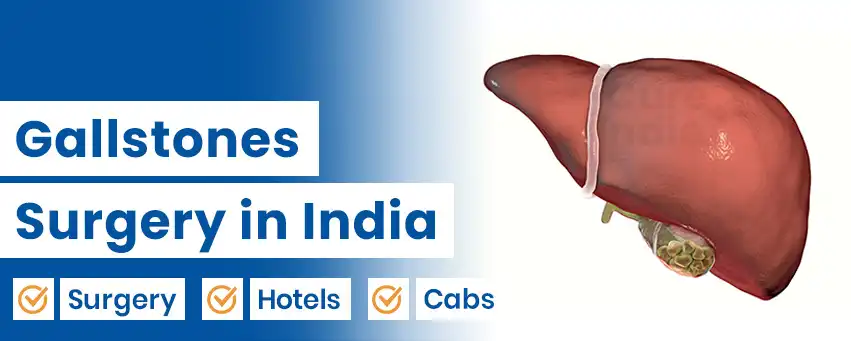
A gallbladder is a pear-shaped, small organ located beneath the liver on the right side of the abdomen. The function of the gallbladder is to store bile (a digestive juice that is released in the small intestine and aids the digestion of food). When this bile forms hardened pieces in the gallbladder or the bile ducts (the passageway that carries bile from the gallbladder to the small intestine), it is known as gallstones. The gallstones are also known as cholelithiasis. The size of gallstones varies from as tiny as sand particles to as large as pebbles. Some people don’t have the symptoms of gallbladder stones, but if the stones get stuck in the bile ducts, it can cause symptoms like pain in the abdomen.
From African countries like Cameroon, Congo, Rwanda, and Ghana, a lot of people are travelling for gallbladder stone treatment in India. As the cost of gallstones treatment in India is much less and the treatment service is top-notch, people from across the nation prefer India to get medical treatments. The hospitals in India are equipped with advanced medical instruments and have the most skilled gallbladder treatment doctors. Medical staff in Indian gallstone hospitals are very cooperative with their patients and are known to deliver smooth and right medical care. Hence, global patients get the best and most cost-effective gallbladder stone treatment in India.
Initially, many people don’t really have the symptoms of gallbladder stones. However, with time, the symptoms start to appear. Sometimes, the gallstones cause inflammation in the gallbladder, a condition known as cholecystitis. It arises when the gallstones get trapped at the opening of the gallbladder. It shows symptoms like pain in the abdomen, fever, and nausea. These symptoms can come and go, or they may stay. Besides these, there are other signs and symptoms of gallstones. These include:

You may feel the pain in the upper-right abdomen or at the centre of the abdomen if you have gallstones. This pain can come from time to time as you eat food that is high in fat. Some of the symptoms mentioned above are the same for pancreatitis and appendicitis. So, if you are experiencing these signs and symptoms of gallstones, you should consult your doctor immediately to confirm the medical condition.
As you consult your doctor and explain your symptoms, he/she will ask you about your medical history and conduct a physical exam, laboratory tests, and imaging techniques for cholecystitis diagnosis. Mentioned below are the diagnosis techniques for gallstones:
The blood tests can show if you have an infection—pancreatitis, jaundice, or any other infection that the gallbladder may have caused. Also, if you have an infection in the body, the amount of WBCs will be increased.
It is a commonly used technique to diagnose various conditions. It is a medical device that has a transducer that is run on the stomach. It shows the structures of the stomach by producing images of your stomach on a computer display.
Your doctor will pass an endoscope (a thin and flexible tube) from the mouth, which moves to the digestive tract. The endoscope has a small transducer that produces sound waves and shows the images of the stomach on a computer display.
A CT scan is a technique that produces very clear pictures of the gallbladder and the surrounding organs. It is used when the results of endoscopic ultrasound are not conclusive.
ERCP is a technique that is used to diagnose the medical condition in the pancreatic duct and bile duct. During this procedure, an endoscope is passed from the mouth to the duodenum (the initial part of the small intestine) to visualize the ducts. During this procedure, the dye is injected into the ducts, and the X-ray images are produced, which helps in the diagnosis of gallstones that may have reached the bile ducts.
MRCP is similar to MRI, which is used to examine the bile ducts. It is a non-invasive diagnostic approach that is used to create clear images of the bile ducts.
It is also known as HIDA Scan. It is a method that tests the functioning of the gallbladder. During this method, radioactive material is injected into the veins (bloodstream), and the function of the liver and gallbladder is checked to see how they can uptake the dye and eliminate it from the body. It also helps in tracking if there are any blockages in the bile ducts.

The two gall bladder stone types are:
These are the most commonly occurring type of gallstones and have a yellow appearance, composed mainly of undissolved cholesterol.
These type of gallstones are darker in color either brown or black and are formed as a result of too much bilirubin in the bile.
There are two types of gallstones treatments available for gallbladder stone treatment in India: surgical treatment and the non-surgical treatment. The choice of treatment approach depends on the factors like number and size of the gallstones, associated risks or complications, the overall health of a patient, etc.
The non-surgical treatment methods are utilised to ease the symptoms and dissolve the small stones. If the condition is mild, then this approach to treatment is the right choice. The non-surgical cholelithiasis treatment includes:
■ Medications: Your doctor may prescribe you some medicines to dissolve the gallstones. He/she may prescribe you the medication that causes the liver to produce less cholesterol and further dissolves the cholesterol gallstones, or he/she may prescribe you medicines that make the bile thin and hence dissolve the stones.
■ Extracorporeal Shock Wave Lithotripsy: ESWL is a procedure that breaks down the gallstones into small pieces by using shock waves. Once the gallstones are reduced in size, they can pass smoothly from the gallbladder. This approach of treatment is utilised when the patient has small stones or sometimes when the surgery is not suitable for some patients.
■ Methyl Tertiary-Butyl Ether Injections: In this method, the solvent (MTBE) is injected into the gallbladder, which dissolves the gallstones rapidly. However, when this method is used, there may be a little burning sensation.
■ Endoscope Drainage: It is a method where the doctor passes an endoscope containing a wire from the mouth and moves it to the cystic duct with the help of a camera and then places a wire between the gallbladder and the duct, which will then coiled and act as a passageway between the gallbladder and the duct. This method is used when stones have blocked the bile ducts.
The surgical approach for gallbladder stone treatment in India involves removing the gallbladder, which is known as cholecystectomy. When the gallstones cause other complications, it is best to have gallbladder surgery to get permanent relief. About 80% of people who have gallstones require the surgery. There are 2 types of surgery for cholecystectomy. These are mentioned below:
■ Laparoscopic cholecystectomy: It is the most common type of surgical gallbladder stone treatment in India. It is also known as keyhole surgery. During this procedure, your doctor makes many small incisions in the abdomen. Then, a laparoscope (a flexible and thin tube with a camera attached) along with the surgical devices are inserted through the incisions. Then the abdomen is inflated with CO2 gas to make the space for the surgeon so that he/she can perform the surgery. The surgeon then carefully detaches the gallbladder from the blood vessels and bile ducts. Once the gallbladder is removed, the incisions are then closed with stitches. Laparoscopic cholecystectomy is a less-invasive approach to removing a gallbladder, and it causes only minor pain as compared to open surgery. The recovery time after laparoscopic surgery is also less than the open surgery approach.
■ Open Cholecystectomy: Under certain circumstances, laparoscopic surgery may not be suitable, and a patient needs an open surgery. Unlike laparoscopic surgery, in open surgery, one large incision is made on the abdomen, and the gallbladder is removed directly without any inflation with CO2. The incision is then closed with the stitches. Open surgery is performed when the laparoscopic surgery may not be suitable because of any previous surgeries.
Both the surgical approaches of removing the gallbladder are effective in stopping the complications that the gallstones may cause. After the gallbladder is removed, the bile juice directly flows from the liver to the small intestine. Removing the gallbladder does not affect the body adversely.


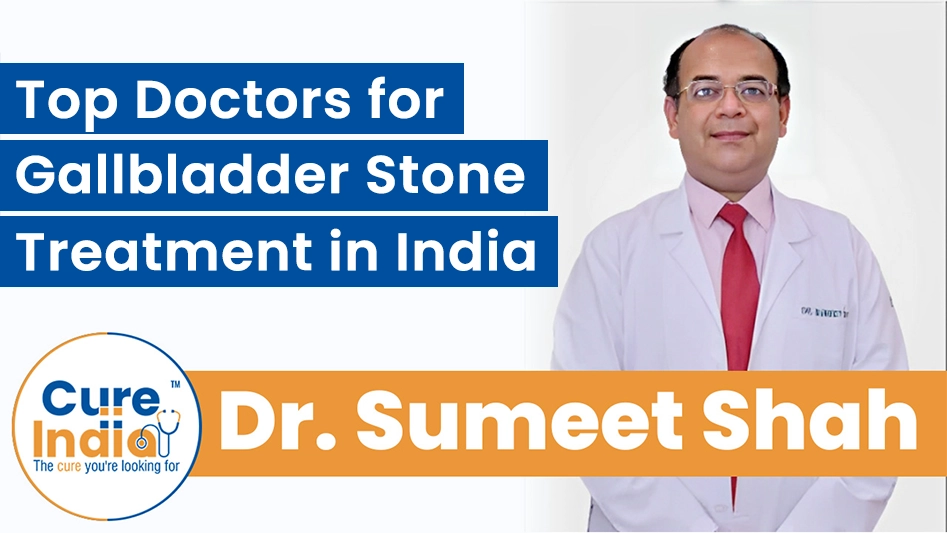
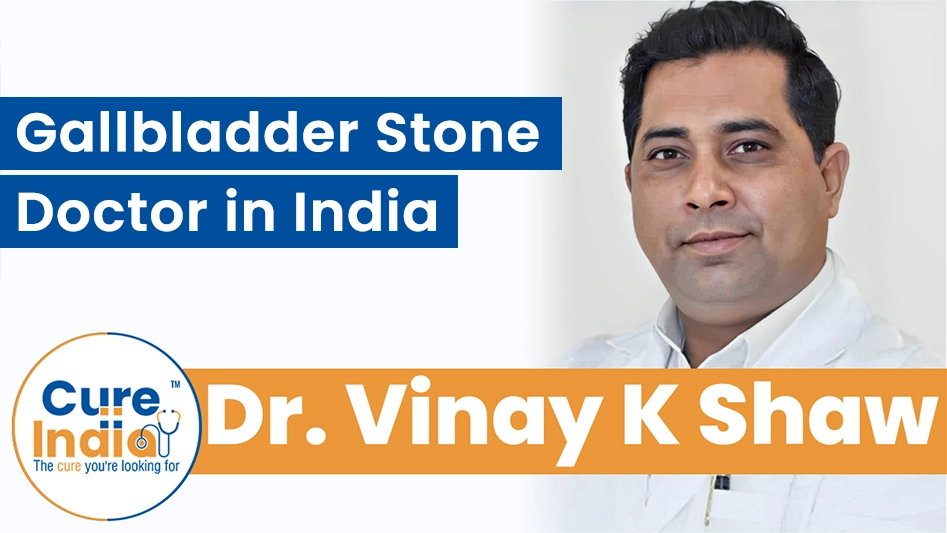
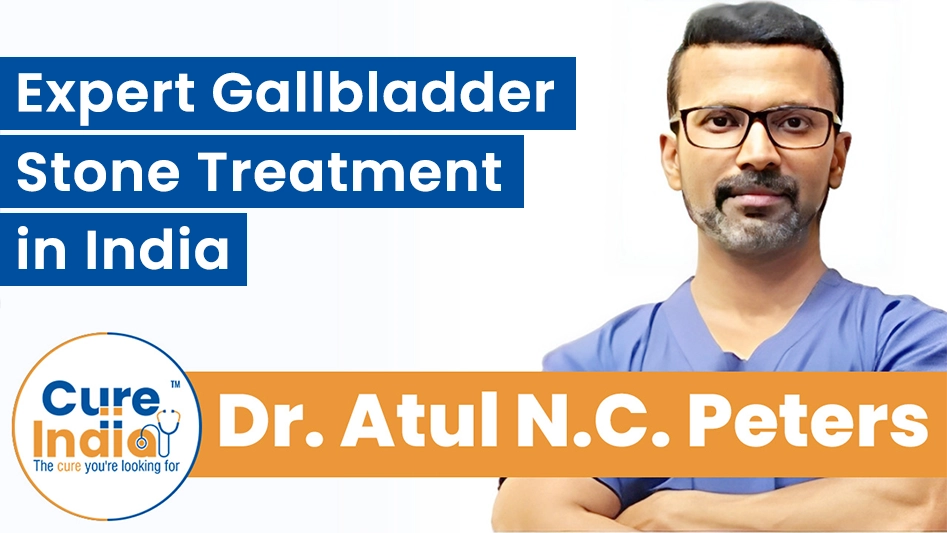
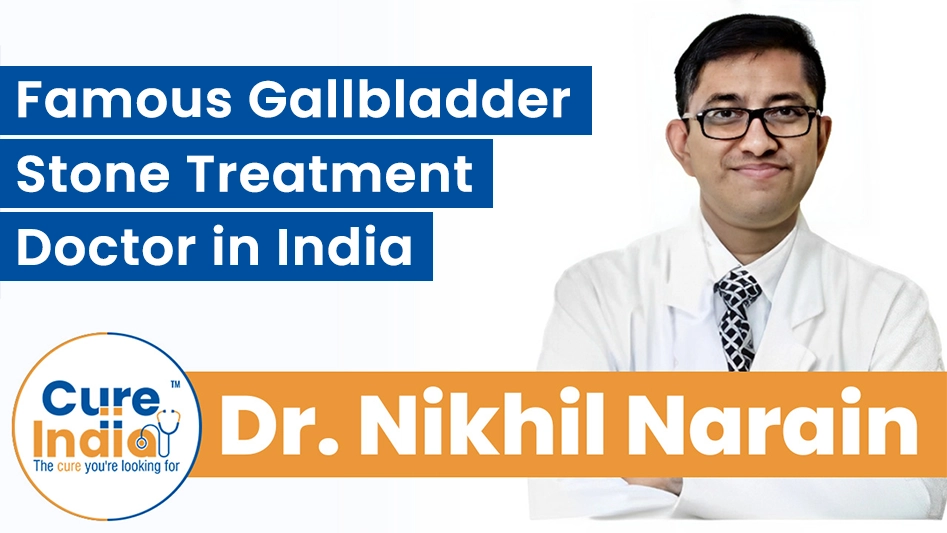
The total gallbladder removal surgery cost in India depends on the type of surgery, the hospital where you are undergoing your treatment, your surgeon’s experience, your overall health, location, duration of stay, health insurance coverage, etc. However, on average, gallbladder removal surgery costs around $2,000. This is much lower than the cost of the same treatment in the USA, which is around $5,491 to $17,391. While in the UK it starts at $9,216.
| Treatment | Cost in India | Stay in India |
|---|---|---|
| Laparoscopic Gallbladder Stone Treatment in India | $2,000 | 7 Days |
| Open Gallbladder Stone Treatment in India | $1,500 | 7 Days |
The gallstones, also known as cholelithiasis, can be caused by an imbalance in the bile components. The primary gallstones symptoms include abdominal pain, nausea, and fever. The small gallstones can be removed by non-surgical treatments whereas the larger gallstones require the surgical approach. And also. The method of cholelithiasis treatment also depends on your overall health. You should take proper rest after the treatment and take your healing time before starting day-to-day life. The cost of gallstone surgery is very low in India as compared to any other country. Indian hospitals provide the best treatment at very cost-effective rates. If you are looking for the best country for your gallstone treatment, you can definitely consider India.
Since the gallstone surgery recovery is minimally invasive, the recovery is much faster and less painful than the conventional open surgery.
You will be discharged the same day and can resume the activities in about a week as compared to the open surgery where the recovery may take a month at a minimum.
